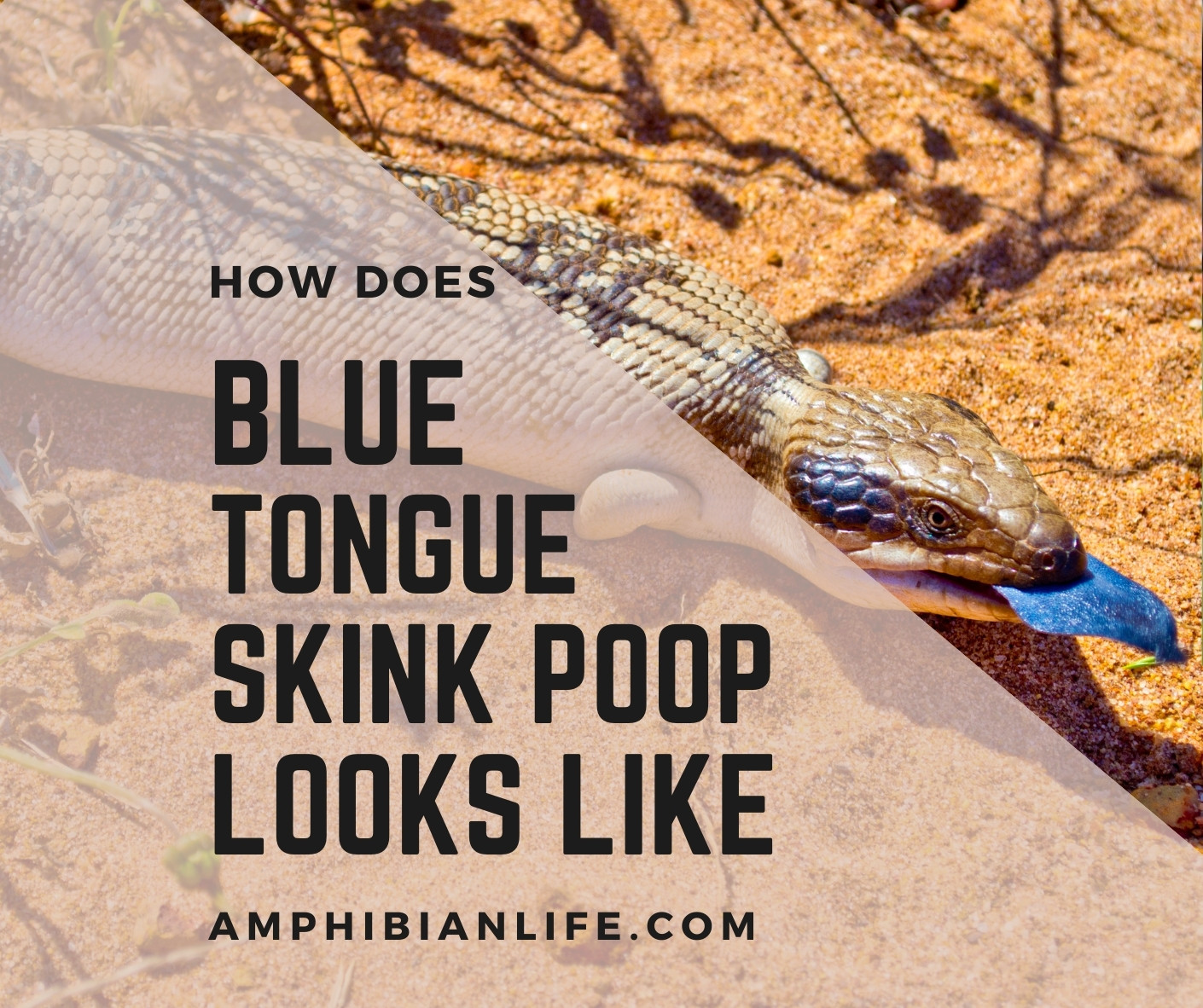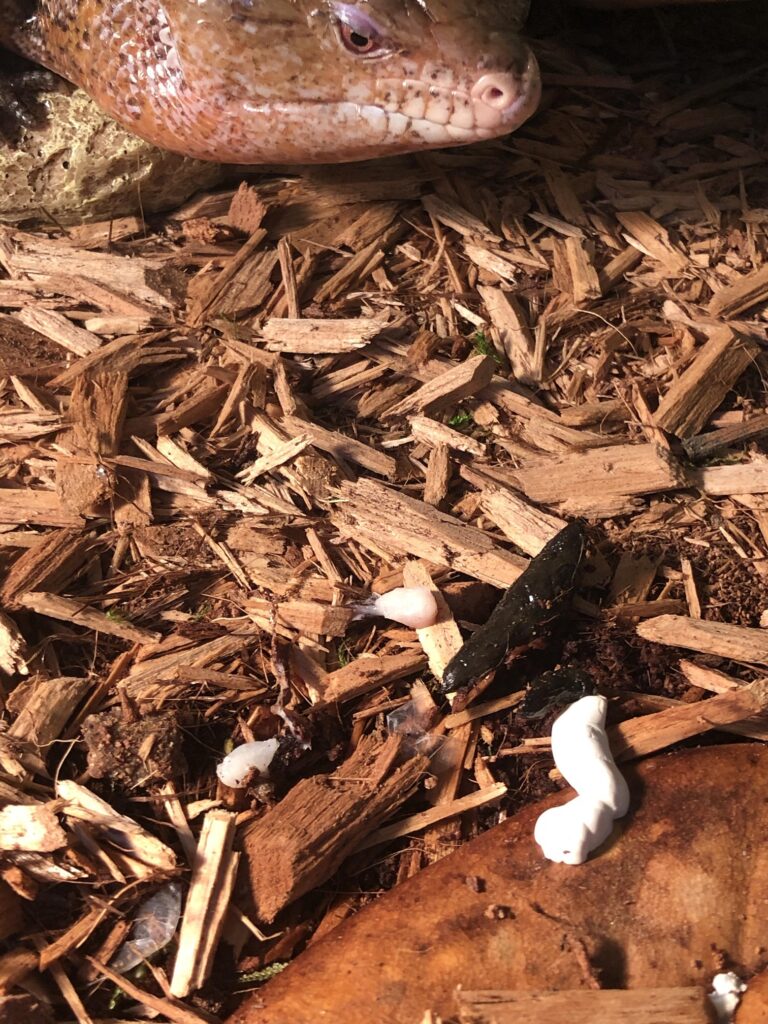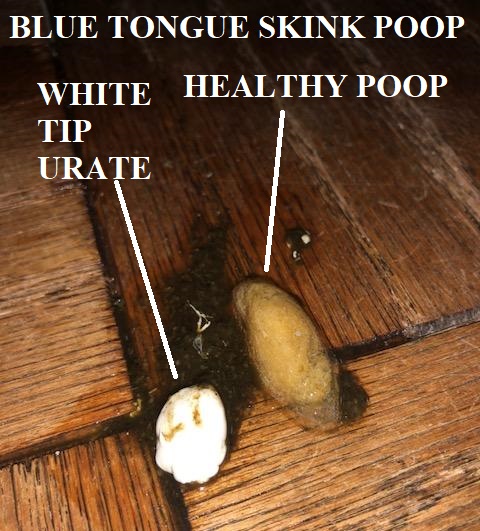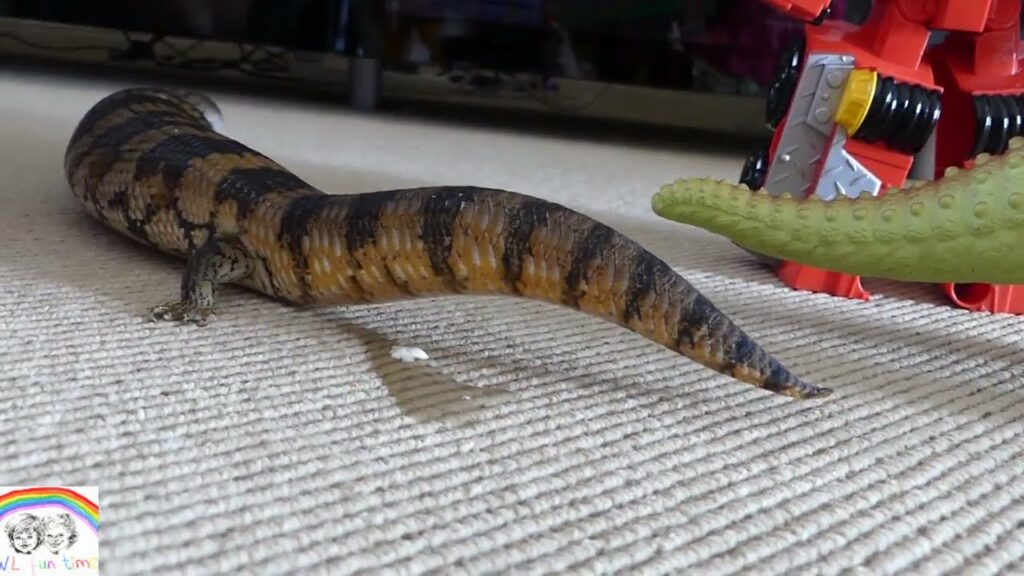
What does blue tongue skink poop look like?
Learning and understanding about your pet Blue Tongue Skink’s poop are one of the crucial parts of their care.
Owners who have a smart understanding of their pet’s poop are better caretakers than others.
With understanding the nature, texture, frequency, and other aspects of your blue tongue skink poop, you can always care for them more attentively.
New blue tongue skink owners always try learning facts and information about their cute little lizard pet.
However, they often overlook the importance of knowing everything about their Skink’s poop during the entire process.
A question like what does healthy blue tongue skink poop looks like? Or what does normal blue tongue skink poop look like?
Are something that every owner should know about. And to simplify that, we have brought answers to all your queries.
So, without any further ado, let’s begin going through the Blue Tongue Skink Poop learning guide below:
Blue Tongue Skink Poop Guide
The guide will contain topics including:
- What does a healthy blue tongue Skink poop look like?
- Healthy Blue tongue skink poop
- Unhealthy Blue tongue skink poop
- Do blue tongue skinks pee? And more
Healthy blue tongue Skink Poop
What does healthy blue tongue skink poop look like?
Blue tongue Skink poop which is also known as Scat, looks like a cylindrical pellet.
While its 90% portion is brownish, the remaining is the whitish tip or the Uric acid.
The brown part is a little dry and firm, whereas the white part is squishier.
Though fresh blue tongue skink poop is pasty and sticky-like, it becomes dry and solid after some time.
While you think of a picture of Skink poop, it looks quite similar to any other lizard’s poop.

Does blue tongue skink poop smell bad?
Single evidence of blue tongue skink’s poop will not smell bad or even evident.
However, if you have a lot of Skinks or accumulated poop, it can then smell bad.
Also, it is always the fresh poop that may smell, as when it gets dried, smell faints.
Also, before concluding, do find out whether it is the poop or your pet skink which is smelling bad.
Normally, Blue tongue skinks do not smell; however, they might stink if they have walked over their poop or leftover food.
How often Should blue tongue Skink poop?
Blue tongue skinks should poop with the likewise frequency of how often they eat.
Generally, skinks should feed every alternative day or after every three days.
Likewise, to their eating cycle, they should release waste twice or thrice in a week, after every 2 to 3 days. A young skink who eats daily will poop daily as well.
While some skinks can poop right after feeding, some will poop 12 to 24 hours later.
During Brumation, skins can go without eating for up to as long as three months.
Following a similar time, they will also poop less. It can be once a week or ten days or so.

UnHealthy blue tongue Skink Poop
What does an Unhealthy blue tongue skink poop look like?
What are Abnormal skink poop colors? Well, We have learned enough about how healthy skink poop looks like, let’s highlight unhealthy or abnormal skink poop.
If your pet skink’s poop does not look like what is classified above, it is a sign of illness, dehydration, etc.
‘Green’ Blue tongue skink poop
If your Skink’s poop is green in colour, then it is a sign that you are feeding too much sugar.
Remember Skink’s diet should contain only 10% of sugar from natural sources like fruits.
And if their poop comes to green, lower their fruit intake and increase plants and green vegetables.
Yellow Poop or Yellow Urate
Yellowish/off-white urate are signs of dehydration in your Skink. Yellow poop can also be a result of those red fruits you feed your Skink the last time. In some rare cases, yellow poop also signifies liver problems.
Hence if it is only the one time you noticed yellow poop, then avoid it.
However, if the process repeats, your Skink needs a quick vet appointment.
Chalky Hard Urate
Chalky Hard Urate signifies calcium overdoes in skinks. There isn’t anything to worry about, but simply control calcium from your Skink’s diet.
Chalky Hard Urate can also be a sign of dehydration. Thus, consider feeding them more fluids, freshwater, and diluted food.
All White Poop
If your blue tongue skinks are pooping all white, it is because they are over-hydrated.
Limit their bathing session and water intake for one or two days in a row, and their poop will normalize.
Red Skink Poop or Blood In Poop
Red Skink Poop or Blood In Poop is not a good sign at all. The reasons can range from internal blood, intestinal injury, and constipation/impaction. All of this can happen if,
- You are feeding food that is too big to swallow and digest.
- You are feeding them the wrong insects, especially the ones with hard exoskeletons.
- Your Skink has possibly swallowed a whole insect that has further scratched its intestinal walls.
- Constipation can occur if you are feeding more insects and fewer vegetables/ plants to your Skink.
In case blood in Skink’s poop was very occasional, feed them fibrous food, water and give warm baths. However, if the instance keeps repeating, consult a vet soon.
Abnormal Size, texture, and smell
- Large or small blue tongue skink poop (Size): It happens possibly due to dehydration. Simply improve their diet needs and feed freshwater.
- Mushy or fluffy blue tongue skink poop (texture): It can result from parasites or infection. If the pattern continues for more than two days, consult your vet immediately.
- Runny poop (texture): It can indicate diarrhoea or over-hydration. Even new diets can result in runny skink poop. Remember prolonged if the pattern continues, it is vital to meet your vet soon.
Odorous small blue tongue skink poop (smell): It happens due to parasitic infection or if their enclosure is left dirty for long.

Do blue tongue skinks pee?
Blue Tongue skinks pee; however, it is neither as liquid as mammals, neither the process is same. Skink’s poop and pee from the same opening called Cloaca.
The white mussy tip on their poop is Urate/ uric acid (pee). Because Skink’s body absorbs 90% of the liquid, their poop is not runny or liquid.
How do skinks poop?
Blue tongue skinks poop from Cloaca, an intestinal outlet. It is where all their digestive, urinary, and genital waste collects and passes through.
Skink’s poop and pee together from the same body opening.
Why is my pet Skink not pooping?
How do I get my blue tongue Skink to poop? At times, your blue tongue skink might go without pooping for long. As the instance is problematic, as a concerned owner, you must try making them poop.
Blue tongue skinks are cold-blooded animals, and thus they require a good amount of heat to function properly.
If their habitat is cold, the situation can lead to indigestion resulting in infrequent poop. The ideal temperature for your Skink’s habitat should be
- 85° F to 95° F during the day
- 70° F to 75° F at night
Note: Temperature requirements can also vary depending upon the Size of their habitat.
Constipation, wrong diet, or less water intake can cause your skink poop less.
Consider adding fiber-rich food to their diet and feed more freshwater.
Giving a warm water bath is another way to initiate poop pressure in skinks. Let your Skink soak in warm water for 15 minutes. Also, consider giving them a gentle belly rub.
What to do if blue tongue skinks pooping a lot?
If your pet’s blue tongue skink is pooping a lot, it is possibly due to diarrhoea.
If the pattern repeats, it can lead to dehydration in your pet skinks and even worrying health.
Once you notice the signs for more than 2 to 3 days, consult your vet immediately.
Frequently asked Questions
- What do blue tongue skink mites look like?
Mites on Blue Tongue Skink can be of different sizes but possibly so small to even notice casually. You can look for small dots under their scale or on their skin.
To provide your skin with immediate relief, soak them in Tepid water (2:1/Cold water: Boiling water).
Further, clean your Skink’s tank with a hot steam cleaner, possibly with pressurized steam.
Or take Provent-a-Mite spray and Natural Chemistry, mix them and spray inside your Skink’s tank. Avoid spraying the solution directly over skinks.
No products found.
- Are skinks good to have around?
Yes, because skinks are entertaining, they are always fun reptiles to have around.
Not just that, but your pet skink will also help you control cockroaches, moths, crickets, and other house insects.
- What do I feed my Skink? What do Blue tongue skinks eat?
Your Skink’s staple diet should include feeder insects and crickets. On occasions or as a treat, you can consider feeding them kind worms and mealworms.
Classify your skink diet as 10% fresh fruit, 40% protein, and 50% fresh vegetables. However, avoid feeding them too many sweet fruits.
- What do baby skinks eat and drink?
Baby skink can eat and drink anything that a grown-up skink likely would.
However, keep in mind that you reduce portion and bite sizes for them to digest easily. Also, unlike adult skinks, baby skinks need to be feeder daily.
- What not to feed skinks? What can you not feed a blue tongue skink?
Avoid feeding food items including eggplant, rhubarb, and avocado to your Skink. Food that is high in sodium and fat should also be strictly avoided. Also, avoid increasing their calcium and protein intake than that recommended.
- Do skinks need live food?
Skinks, by nature, are wild reptiles, and thus they love catching their prey. If you offer them two insects, one dead and another alive, they will go towards the alive one.
- Are skinks poisonous to touch?
Skinks are low-risk pets and generally not dangerous for humans. Even if they bite you, it won’t react poisonously. Though red-tailed skinks can prove dangerous and if they bite, it might end up lethal.
- How do I clean my Skink’s poop?
Cleaning Skink’s poop when it is still fresh is always recommended. Or at most, wipe off your pet skink’s poop as soon as you notice. Once dried, it can leave white and yellow stains on the surface.
Use a clean object and dispose of their poop directly in the flush. Make sure you wash your hand after that.
Wrapping up
And this was all for blue tongue skink poop. Identifying a skink’s poop is easy.
If the theoretical part confuses you, you can reference the Picture of blue tongue skink poop.
While stinks’ poop comes in handy in understanding their health, make sure you keep cleaning it frequently.
Poop accumulation not only will lead to bad odour but can also affect your Skink’s health.
